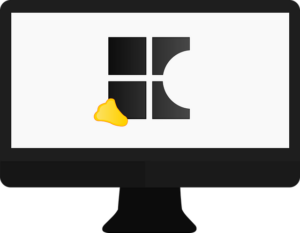Alpine Linux is a minimalistic and lightweight distribution designed for power users and system administrators who prioritize efficiency, control, and speed. It features a powerful command-line interface (CLI) that allows for advanced package management with APK, offering precision in installing, updating, and removing software without unnecessary dependencies. The guide provides a detailed walkthrough on mastering the Alpine shell, covering essential tasks like file manipulation and system administration, as well as scripting to automate tasks for enhanced productivity. Users will learn how to leverage APK's version specification and repository management features, ensuring a lean system setup. Additionally, Alpine Linux uses musl libc and busybox, which contribute to its small footprint, and it employs OpenRC as its init system for fine-grained control over services. Tools like `top` and `htop` enable real-time monitoring and optimization of memory usage and processes, maintaining peak performance for demanding tasks. The distribution's focus on security, coupled with its ability to automate routine maintenance, makes it a top choice for users who want a highly customizable, secure, and efficient Linux experience.
command-line interface, Alpine Linux, power users, system optimization, package management, automation, mastery, advanced features, user efficiency.
Alpine Linux stands as a beacon for power users seeking to harness the full potential of their systems through a robust command-line interface (CLI). This article delves into the essence of mastering Alpine’s CLI, illuminating paths to system optimization and package management that elevate user efficiency. By leveraging advanced CLI features, users can tailor their Alpine experience to suit complex needs, automating tasks with precision and ease. Whether you’re a seasoned pro or new to the CLI, this guide promises to deepen your understanding and proficiency with Alpine Linux’s command-line prowess.
- Mastering the Command-Line Interface in Alpine Linux: A Power User's Guide
- Leveraging Advanced Features of Alpine Linux's CLI for System Optimization
- Customizing and Automating with Alpine Linux's Pacakge Management through the CLI
Mastering the Command-Line Interface in Alpine Linux: A Power User's Guide

Alpine Linux, renowned for its minimalistic approach and lightweight nature, offers a robust command-line interface (CLI) that is both efficient and powerful. For power users seeking to harness the full potential of Alpine, mastering the CLI is not just an advantage but a necessity. The CLI in Alpine Linux provides a direct line of communication with the system, allowing for complex operations through concise commands. This guide will navigate users through the nuances of the Alpine shell, exploring package management, file manipulation, and system administration tasks that are best executed via the command line. Users will learn to leverage the power of APK, Alpine’s package manager, to install, update, and remove software with precision. Additionally, the guide will delve into scripting within the CLI, demonstrating how to automate repetitive tasks and streamline workflows. For those accustomed to graphical user interfaces, this section will underscore the benefits of the command-line environment in Alpine Linux, emphasizing the control, speed, and system resource savings it offers, making it an indispensable tool for power users and system administrators alike.
Leveraging Advanced Features of Alpine Linux's CLI for System Optimization

Alpine Linux stands out among Linux distributions for its efficient and lightweight nature, largely due to its musl libc and busybox implementations that minimize resource consumption. Power users who are well-versed in command-line interfaces (CLI) can leverage these advanced features to optimize their systems for peak performance. The package management system, apk, is a cornerstone of Alpine’s efficiency, allowing for quick updates and installations without unnecessary dependencies. Users can employ commands like `apk add` and `apk upgrade` to manage software seamlessly, ensuring that the system remains streamlined and responsive. Additionally, Alpine’s init system, OpenRC, provides a high degree of control over services, enabling users to fine-tune startup items and system resources according to their specific needs. Advanced users can also exploit Alpine’s built-in tools for memory optimization, such as `top` and `htop`, to monitor and manage processes in real time, ensuring that only the essential services are running, thus conserving system resources. By utilizing these command-line utilities, Alpine Linux users can maintain a highly optimized system, which is both responsive and efficient for demanding tasks.
Customizing and Automating with Alpine Linux's Pacakge Management through the CLI

Alpine Linux stands out in the realm of lightweight, security-focused distributions, offering a robust command-line interface (CLI) for power users who prioritize efficiency and control. One of the most powerful aspects of Alpine Linux is its package management system, known as apk. This tool allows for both the customization and automation of system packages, providing an unparalleled level of flexibility and precision. Users can effortlessly manage their system’s software repository indexes with just a few CLI commands, ensuring that they only install the packages they need. Moreover, the ability to integrate apk into scripts or use it in conjunction with cron jobs enables users to automate routine tasks such as updating the system, installing new software, or removing obsolete applications. This level of control is particularly beneficial for system administrators and developers who require a lean and secure environment tailored to their specific needs. The customizability of Alpine Linux through apk extends beyond mere package installation; it allows users to specify package versions, upgrade packages selectively, and even maintain multiple package repositories, all from the command line. This makes Alpine Linux an exceptional choice for those who seek a highly configurable and automated experience in their daily operations, ensuring that their system remains streamlined and up-to-date with minimal manual intervention.
Users who have mastered the command-line interface within Alpine Linux possess a powerful toolset for system optimization and automation. The advanced features available through its CLI, coupled with its robust package management system, offer a level of control that is unmatched in many other operating systems. For power users seeking efficiency, security, and a lean system, Alpine Linux’s command-line interface stands out as an invaluable asset. By embracing the CLI, these users can achieve remarkable customization and streamline their workflows, making Alpine Linux a top choice for those who demand both simplicity and complexity from their computing environment.


























